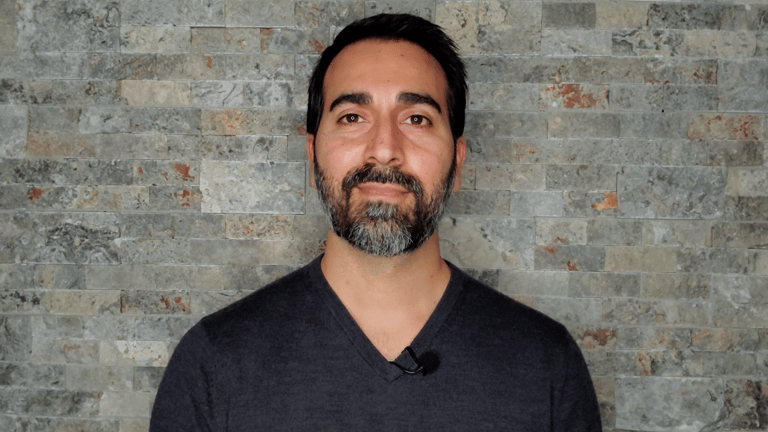
Saving for retirement can sound like a complicated and overwhelming task to start putting money aside for, but you can (and should) actually begin right now.
Alex Chalekian, our Learn mentor, shares how to start saving for your golden years with the four common types of retirement savings accounts.
Part 1: 401(k) Retirement Savings Account
Let’s start with a tax-advantaged, retirement account. This is usually offered by many employers and is commonly known as a 401(k) plan. If you work for a public school or a non-profit organization, your version of this tax-advantaged retirement account would be called a 403(b).
If your company offers a 401(k) or 403(b) plan and you are eligible, you can contribute pre-taxed earnings. Meaning, your contribution comes directly out of your paycheck before federal income taxes are assessed. This contribution lowers your taxable income on that paycheck and your money will grow tax-deferred in the retirement account. You can decide on a specific percentage of your paycheck to go into the 401(k) or 403(b) and put your retirement savings on autopilot.
Additionally, many employers offer some sort of a match on your contributions. For example, as a benefit to its employees, your company might offer to match your contributions, dollar for dollar, up to 7%. This means that for every dollar you contribute, up to 7% of your paycheck, they will make the same contribution into your account. It’s highly suggested that you try to contribute to your 401(k) or 403(b) plan at least up to the percentage that they will match. After all, it’s free money, so make sure you take advantage of it.
A good habit that will help increase your success in reaching your retirement goal, is to increase your contribution any time you get a raise or bonus. This is an easy and effective way to add more money to your nest egg. Calculate the amount of your raise or bonus as a percentage of your income and increase your contribution percentage accordingly.
Part 2: Traditional IRA
A traditional individual retirement account (IRA) is an account that allows you to make contributions that can be tax-deductible and your investments grow tax-deferred.
What does this mean? This means you don’t pay any taxes on the dividends, interests, or gains while the money remains inside the IRA.
Similar to a 401(k), withdrawals are considered as taxable income and there may be an additional 10% penalty if you draw money before the age of 59 and a half.
There are also contribution limits that change yearly. In 2020, the max contribution for the year is $6,000 for those under the age of 50. If you are over the age of 50, the max contribution jumps to $7,000. These numbers change annually, so it’s important to check with your financial planner when you’re ready to start an IRA.
Your contributions may be deductible, therefore reducing your taxable income. But this deduction may be phased out based on your income or if you're covered by a retirement plan at work. It’s a good idea to check with a tax professional if your contributions are deductible.
If your company doesn't offer a 401(k) plan, you might want to consider setting up a traditional IRA to save for retirement. But what if your company does offer a 401(k) plan? Should you contribute to that plan or into a traditional IRA?
If your company offers a match on your contributions, then a 401(k) makes more sense. Additionally, if you plan on contributing more than the max contribution limit of $6,000 or $7,000 in 2020, a 401(k) would be more suitable since it has higher contribution limits.
If you don't plan to contribute more than the annual limit and your 401(k) doesn't offer a match, you might want to set up an IRA where you can have a large investment selection as opposed to limited options in your company’s 401(k) plan.
It’s also important to note that a 401(k) plan doesn't come along with you when you leave the company, while a traditional IRA is portable. This means the IRA is yours and you can control where it's held.
When should I start saving for retirement?
It’s never too early to start setting aside money for retirement, but why is it important to save while you’re young? Simply stated: Compounding interest.
Let’s say you’re 22 years old when you start putting $5,000 a year into a traditional IRA with a 6% annual return until you reach the retirement age of 67. At that point, your IRA would hit a little over a million dollars.
In this same example, let’s say you wait until you’re 32 years old to start saving in the same traditional IRA. That same $5,000 a year with the same return of 6% means your account would have about $557,000 when you’re 67 years old.
In this scenario, waiting 10 years to start saving towards retirement actually costs you about half a million dollars. So to help increase your success in reaching your financial retirement goal, try to start saving as soon as possible.
Part 3: Roth IRA
A Roth IRA is an account that allows you to make after-tax contributions that grow tax-deferred and qualified withdrawals are tax-free. This means you don’t pay any taxes on the interest, dividends, or growth while the money remains inside of the IRA and even when you withdraw funds at retirement.
Similar to a traditional IRA, a Roth IRA is a personal retirement account that offers a large selection of investment options. Both accounts also have the same contribution limits, so in 2020, you can contribute up to $6,000 or $7,000 based on your age.
The major difference between the two accounts is that the contributions into a traditional IRA are tax-deductible, while the contributions into a Roth IRA are not. Also, based on your income, you might not be eligible to contribute to a Roth IRA. It’s important to check with your tax professional to make sure you qualify.
So what is the benefit of a Roth IRA over a traditional IRA account?
The main advantage of a Roth IRA is your account grows tax-free, so the payoff is at the end. Unlike a traditional IRA where your withdrawals during retirement are taxed as income, the withdrawals from a Roth IRA aren’t taxable. Based on your income tax bracket at retirement, this could make a huge difference in your monthly income since you don't have to account for state and federal taxes being withheld or paid when you file your tax return.
Just like we discussed above, compounding interest plays a large role in a Roth IRA as well. Allowing contributions to compound tax-free for 20,30, or even 40 years can make a huge impact on your retirement savings.
Part 4: SEP IRA
If you’re a small business owner, a simplified employee pension individual retirement account (SEP IRA) may be for you. A SEP IRA is a retirement savings account that allows business owners to make contributions that can be tax-deductible and your investments grow tax-deferred. This means you don’t pay any taxes on the interests, dividends, and gains while the money grows in the account.
Similar to a traditional IRA, withdrawals from the SEP IRA are considered taxable income. Additionally, you may face an additional 10% penalty if you withdraw before the age of 59 and a half.
A SEP IRA also has contribution limits. In 2020, the max contribution is the lesser of 25% of your compensation or $57,000 for the year. Again, it’s a good idea to check with your tax professional to see how much you can contribute to this type of retirement plan.
If you have eligible employees, you are required to contribute to their accounts at the same rate you are contributing to your plan. For example, if you’re saving 15% into your SEP IRA, you must also contribute 15% of your employee’s compensation into their SEP IRA.
SEP IRAs offer a lot of flexibility for business owners because they don’t require you to commit to contributing every year like many other retirement plans. SEP IRAs are also easy to set up and maintain and can be combined with traditional and Roth IRAs.
Now that you have a better understanding of how retirement accounts work and which option — or options — is best for you and your financial goals, you’re equipped to start saving. The most important thing is to begin as soon as you possibly can.

